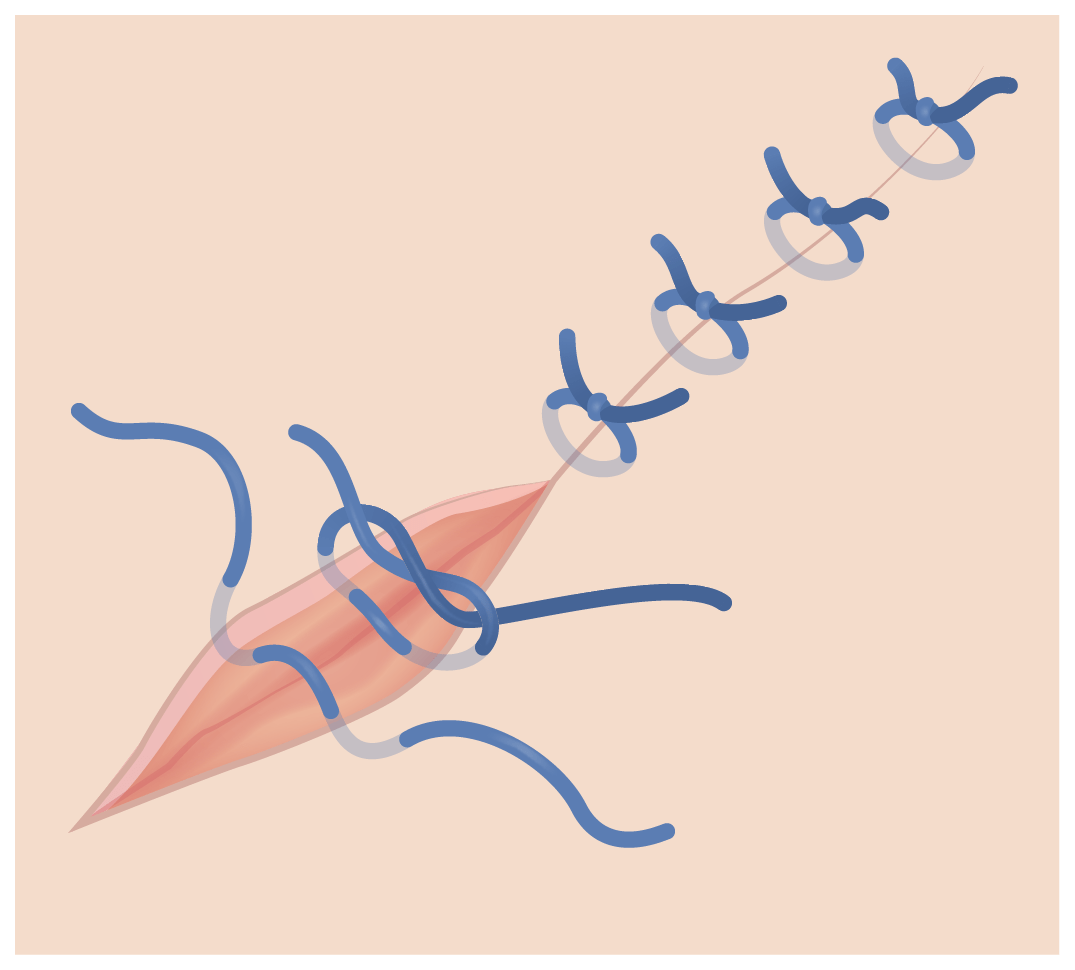Nursing Knowledge
Sutures are medical devices used to hold body tissues together after an injury or surgery (“stitches”). They facilitate the healing process by keeping the edges of the wound together.
Types of sutures:
Tip: Spitting sutures refer to when a suture used in a wound works its way to the surface of the skin and becomes visible or palpable, which may be accompanied by infection of inflammation.

Simple interrupted suture
Image by Lecturio.Generally, nurses will follow the recommendations of the surgeon or provider who placed the sutures. Close examination of the wound will guide the decision.
A general rough estimate for when sutures typically are removed in different areas:
Suture removal kits typically contain suture scissors, forceps or tweezers, gauze pads, disposable gloves, and antiseptic solution for cleaning the wound area.
If the wound edges open during the procedure, you should discontinue the procedure, apply adhesive strips, and notify the provider.
Free Download
Master the topic with a unique study combination of a concise summary paired with video lectures.
USMLE™ is a joint program of the Federation of State Medical Boards (FSMB®) and National Board of Medical Examiners (NBME®). MCAT is a registered trademark of the Association of American Medical Colleges (AAMC). NCLEX®, NCLEX-RN®, and NCLEX-PN® are registered trademarks of the National Council of State Boards of Nursing, Inc (NCSBN®). None of the trademark holders are endorsed by nor affiliated with Lecturio.
Your free account gives you access to:
or